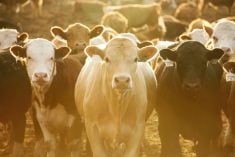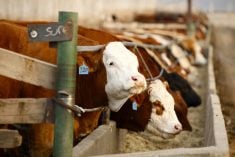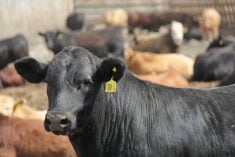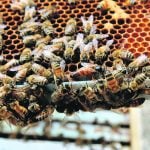Western Canadian feeder cattle markets experienced limited activity over the past week because most auction barns were closed for the holiday season.
There was some reported activity in certain regions such as central Alberta and prices were relatively unchanged from seven days earlier. Frigid temperatures tempered buying activity. Feedlots in the nearby area of the sales were the main buyers, with most operators shying away from shipping cattle farther distances. Ontario demand was quiet. Live and feeder cattle futures reached up to four-week highs providing underlying support to the cash trade. While there was a softer tone in the heavier weight categories, buyers were quick to defend the price structure allowing limited slippage. Wholesale beef values may have turned a corner, ending the week on a firmer tone. The upward momentum in the fed cattle market is expected to continue. Optimism seemed to abound amongst the handful of buyers present.
Read Also

China rapeseed meal futures see largest one-day gain in almost three months after Xi–Carney talks
China’s most active Zhengzhou rapeseed (canola) meal futures posted their largest daily gain in nearly three months on Monday, after Canadian Prime Minister Mark Carney and Chinese President Xi Jinping met in South Korea last week without securing a breakthrough on tariffs.
In central Alberta, a small group of two-month-weaned mixed medium-frame steers weighing just over 600 lbs. were quoted at $215; black unweaned steers averaging 500 lbs. were quoted at $253 in the same region. Weaned pre-conditioned mixed heifers averaging 640 lbs. traded at $181.
Barley prices have been ratcheting higher over the past week. Wintry-type conditions across the Prairies have slowed off-farm movement. Feedlots are starting to factor in a higher cost per pound gain, especially for mid- and lighter-weight replacements. Cold temperatures also caused buyers to factor in a higher deathloss, which caused the market to incorporate a risk discount on certain groups.
— Jerry Klassen manages the Canadian office of Swiss-based grain trader GAP SA Grains and Produits Ltd. and is president and founder of Resilient Capital, specializing in proprietary commodity futures trading and market analysis. Jerry consults with feedlots on risk management and writes a weekly cattle market commentary. He can be reached at 204-504-8339.













